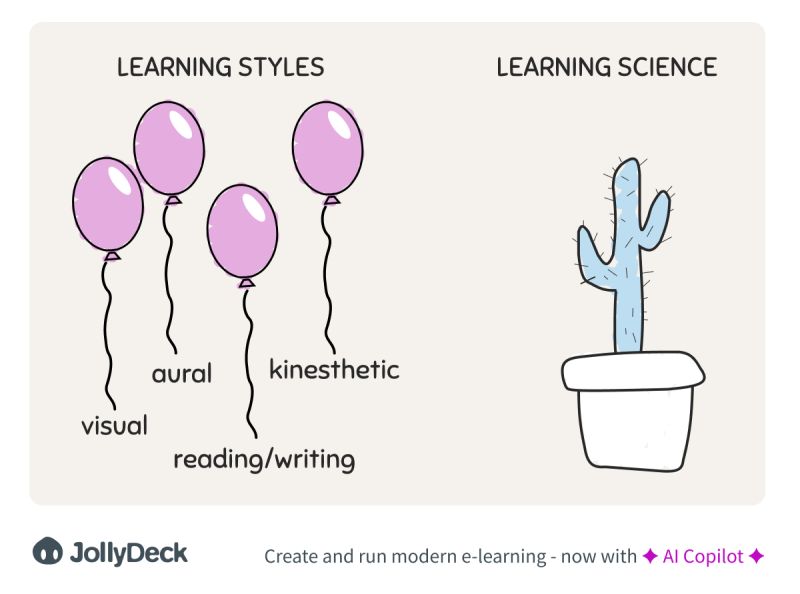Short posts on the state and future of L&D, written by Igor Čenar, CEO of JollyDeck, and Matija Hiti, Chief of the JollyDeck Platform.
L&D tidbits
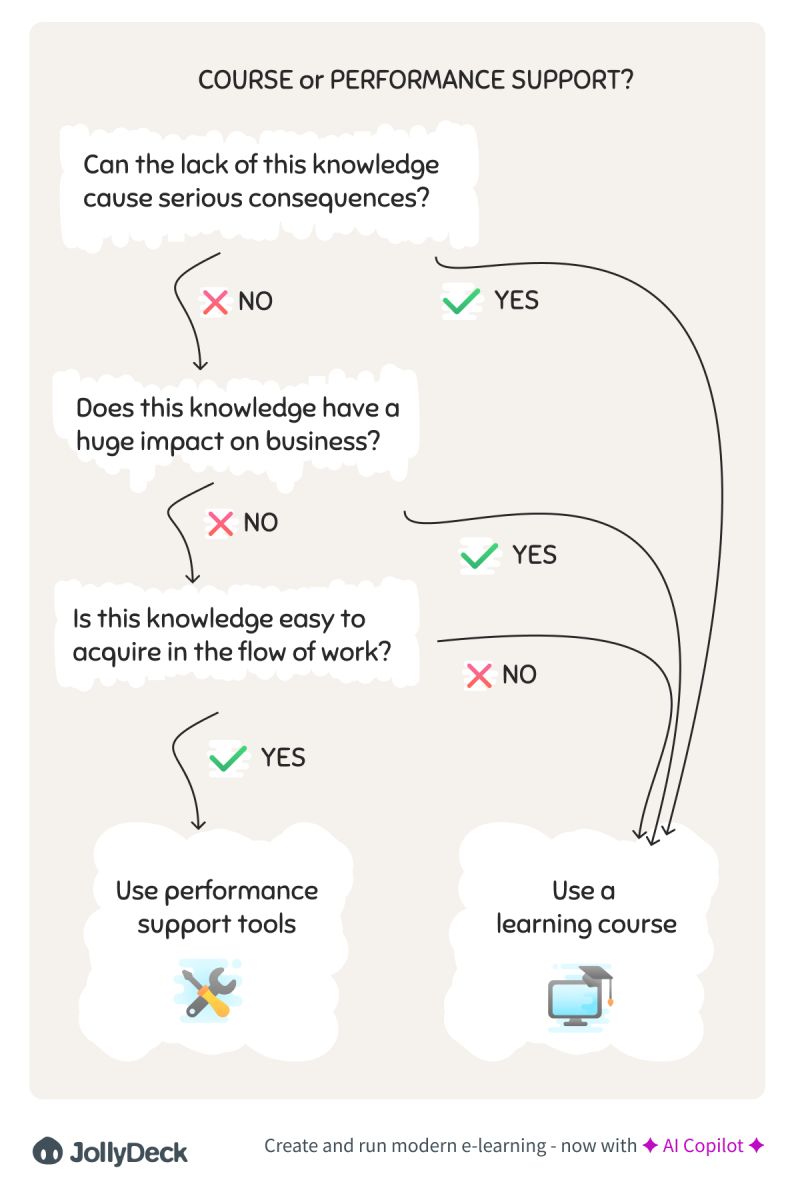
Matija Hiti, 24/06/2024
Choose the right learning method
Fire! What’s your next move? Hopefully, you know because you’ve practised it. But filing a travel claim? That doesn’t need the same approach. It’s time to stop promoting one-size-fits-all learning methods and start choosing what fits the situation best. Deal?
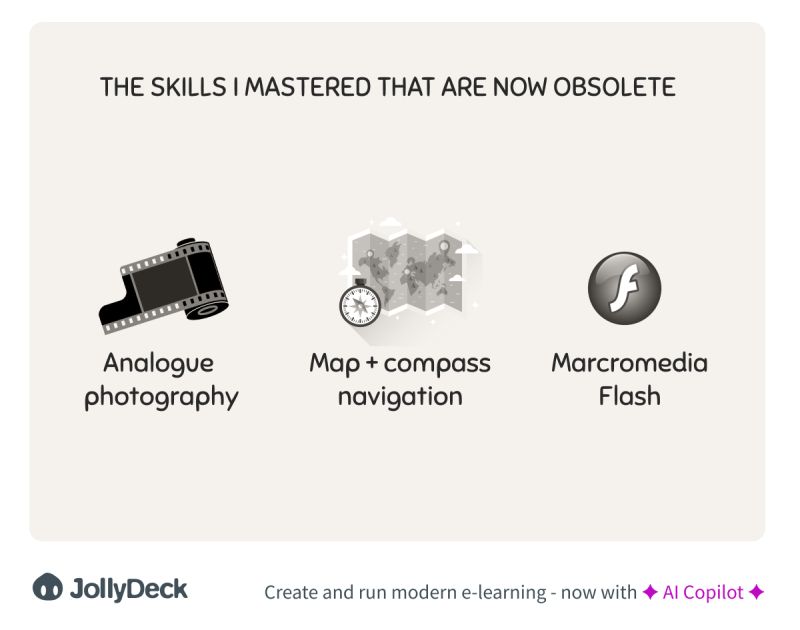
Matija Hiti, 20/06/2024
Skills that stand the test of time
Are you focusing on learning skills that will remain valuable, or are you investing time in ones that might soon be obsolete? As someone with now-useless superpowers like analogue photography and navigating with a compass, I know the importance of choosing wisely. Keep learning and stay adaptable!
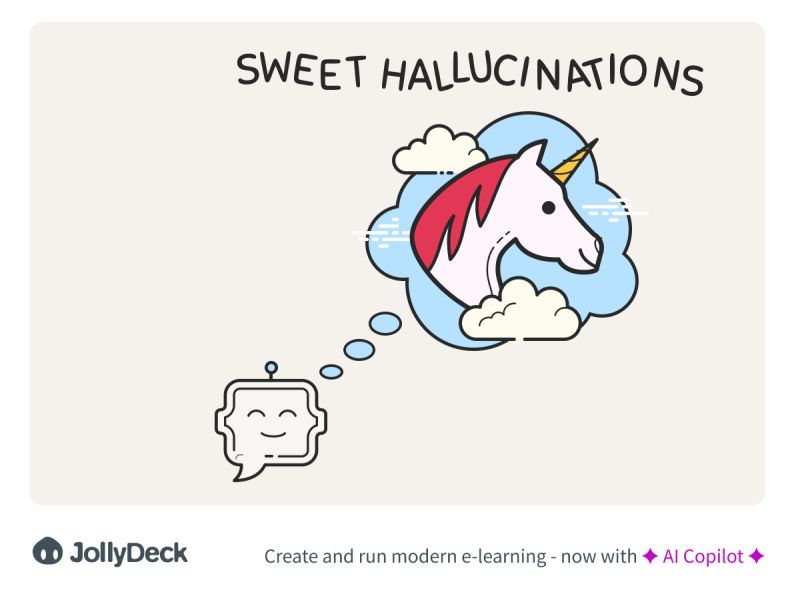
Matija Hiti, 18/06/2024
AI hallucinations aren’t the end
Running out of arguments against AI? You can always mention hallucinations. But are they really such a big deal? AI errors happen for several reasons, much like human errors, and as we learn to manage them, they’ll soon become less of an issue.
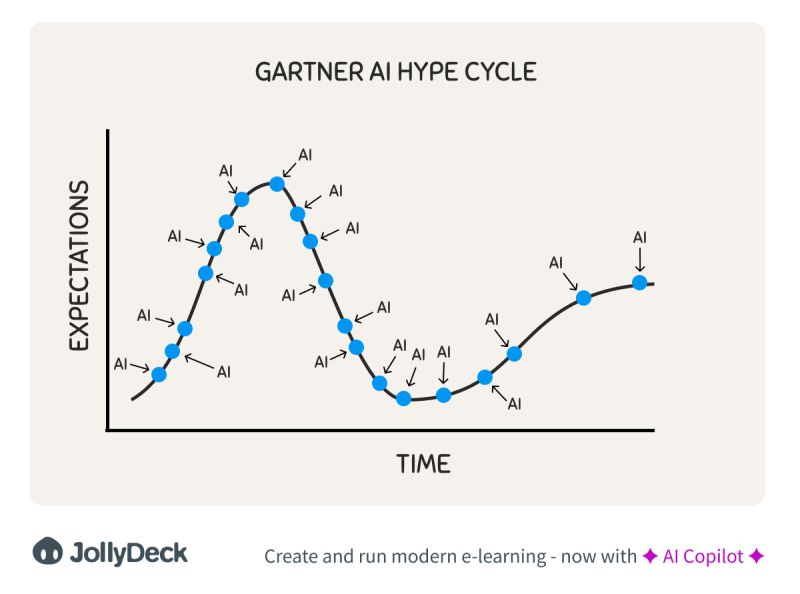
Matija Hiti, 13/06/2024
AI is here to stay
Still waiting for the perfect moment to start using AI? Don’t wait too long—AI is here to stay and can already enhance productivity across many fields. From generating UI messages to debugging code, my colleagues are finding creative ways to leverage AI every day.
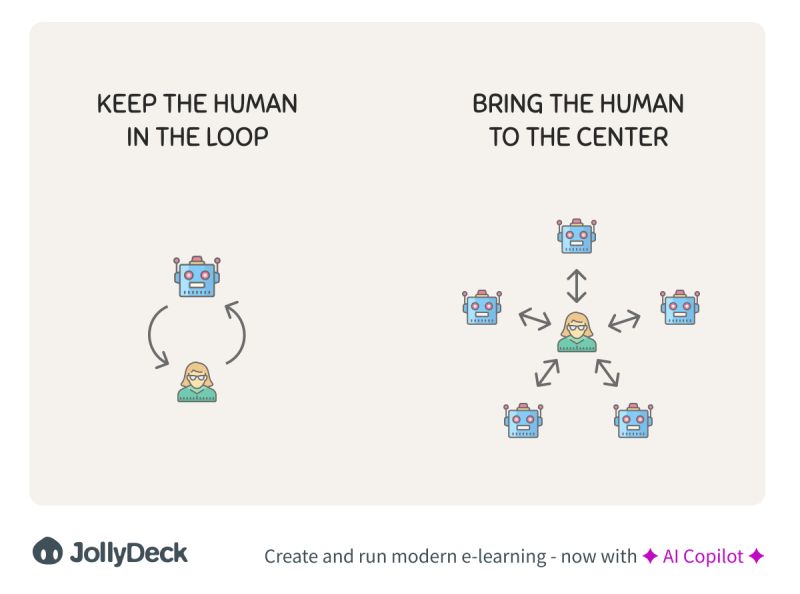
Matija Hiti, 11/06/2024
Humans, not AI, at the centre
I dislike the phrase "Keep the human in the loop" because it implies humans and AI are on equal footing. Humans still provide context, make decisions, and remain accountable, while AI is a powerful tool aiding our work—not replacing it.
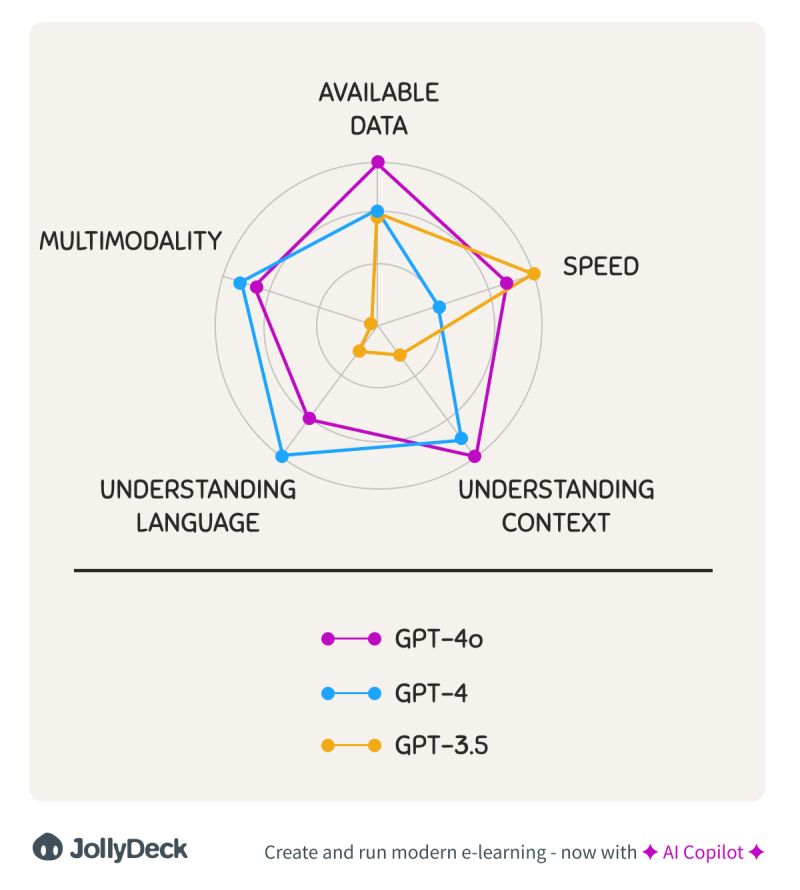
Matija Hiti, 10/06/2024
GPT-4o: Great, but not perfect
Is GPT-4o (Omni) really the top OpenAI model? It offers speed, updated training data, and multimodal abilities, but there are drawbacks too. After weeks of use, I'm not entirely convinced it's the best choice for every task. Here's what I've learned so far.

Matija Hiti, 06/06/2024
Balancing knowledge and skills
Skills are the buzzword today, seen as the new currency in the workplace. But what about knowledge—the deep understanding of how and why things work? It's not about choosing one over the other; it's about finding the right balance. How do we achieve it?
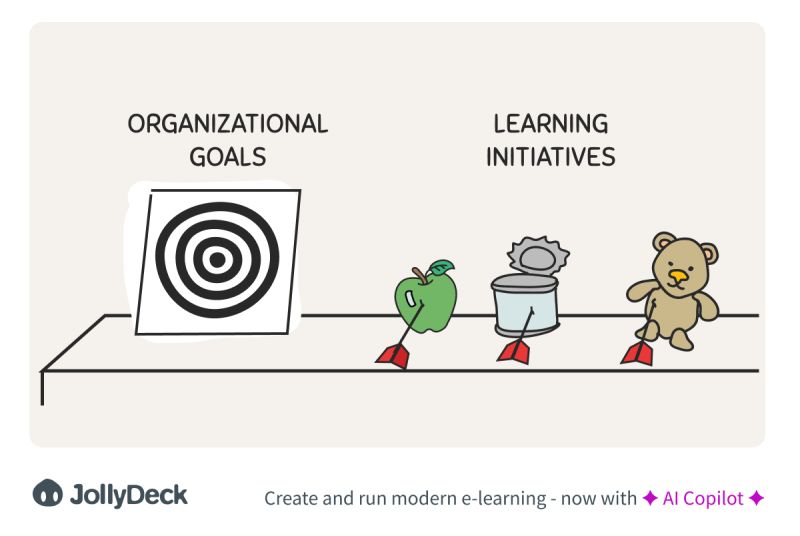
Matija Hiti, 04/06/2024
Bridging the L&D trust gap
There’s a persistent gap between organisational goals and learning initiatives, rooted in a lack of trust. L&D wants alignment with business goals, while other stakeholders want results first. This Catch-22 needs a solution before it leads us into a standstill. How can we bridge this gap?
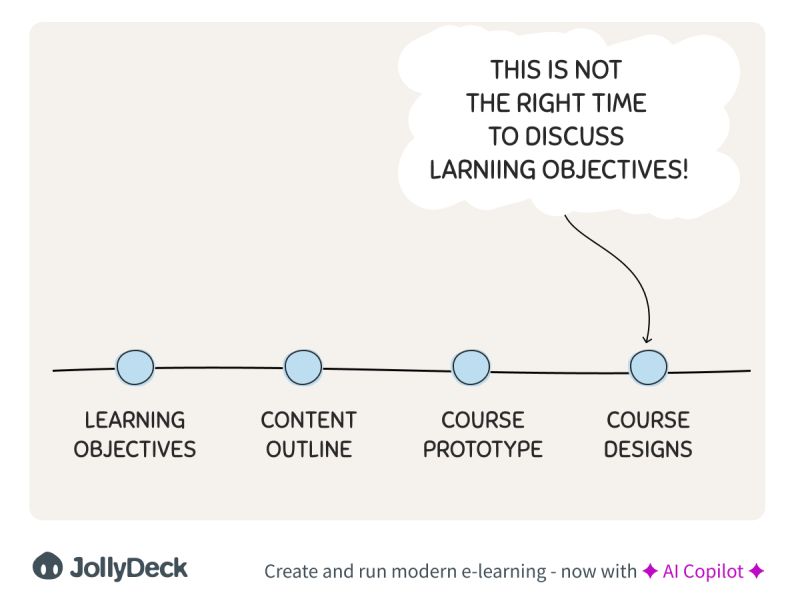
Matija Hiti, 03/06/2024
Handling difficult stakeholders
We’ve all faced difficult stakeholders—those who miss deadlines, disregard processes, and give opinionated feedback. My approach is clear communication, but sometimes it isn't enough. When faced with indifference, do you grin and bear it or pick a fight?
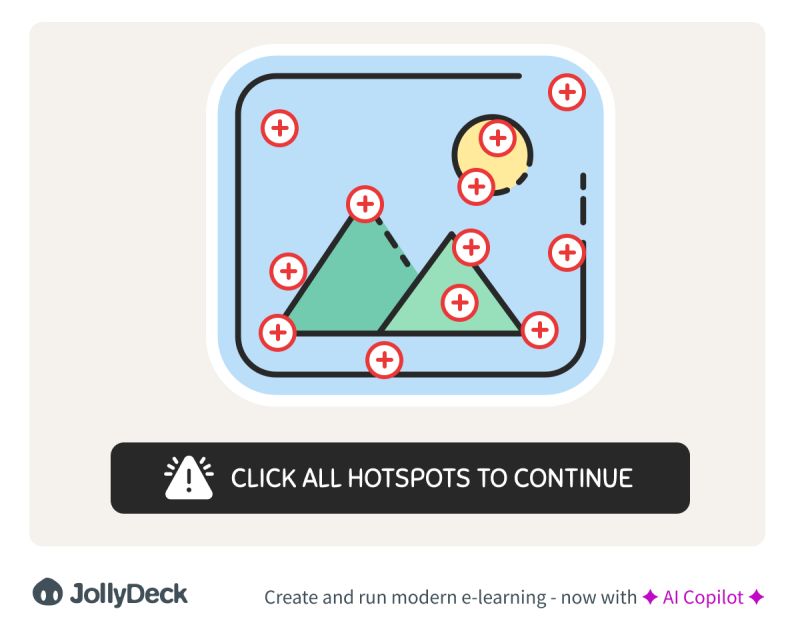
Matija Hiti, 29/05/2024
The e-learning UX flop
Remember those old point-and-click adventure games? They seem to have been reincarnated as some e-learning courses today, where learners click endlessly, searching for hidden links. It's a frustrating experience that some mistakenly call "gamification." What's your biggest e-learning UX pet peeve?
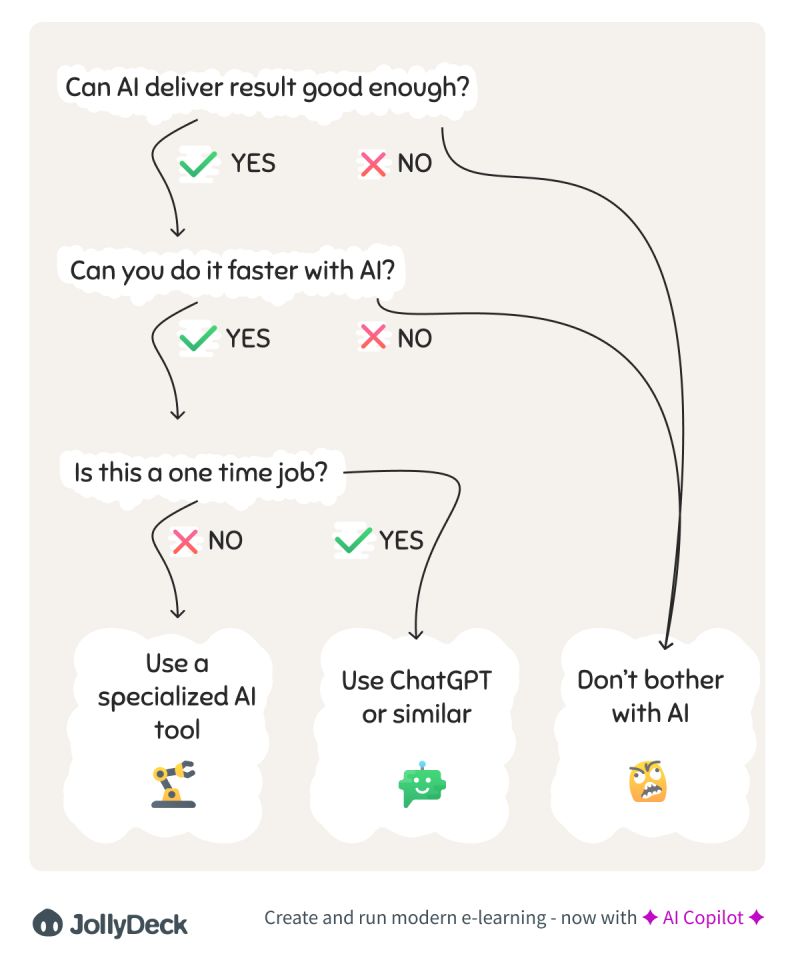
Matija Hiti, 23/05/2024
Choosing the right AI tool
Using AI isn't always the best approach to solving problems; sometimes, traditional methods like asking a coworker or using Google work just fine. While ChatGPT can help, consider specialised AI tools for tasks you frequently perform to save time and effort.
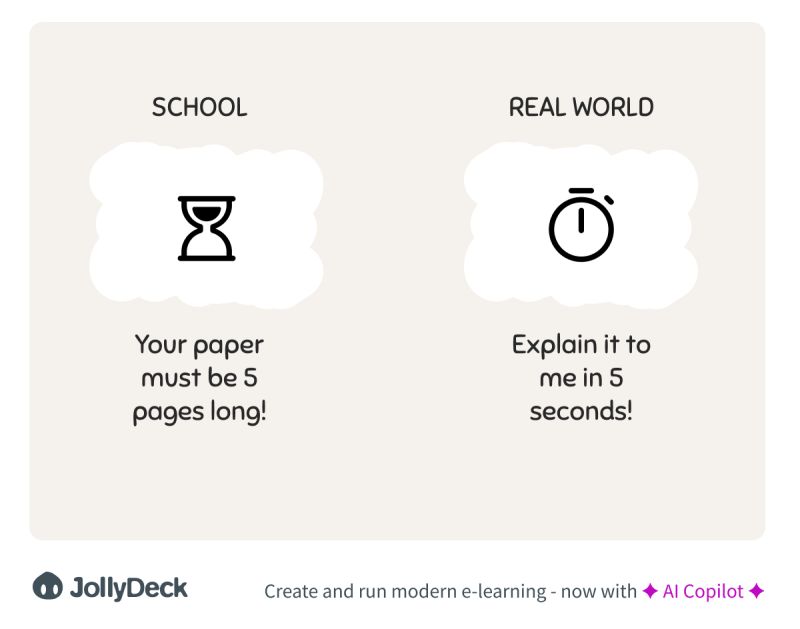
Matija Hiti, 21/05/2024
Rethinking learning for the future
Are we learning the right skills for the real world? Are we teaching the right things to others? We can't predict the future, but imagine being your own teacher back in school—what lessons would you give yourself to navigate today's world better?
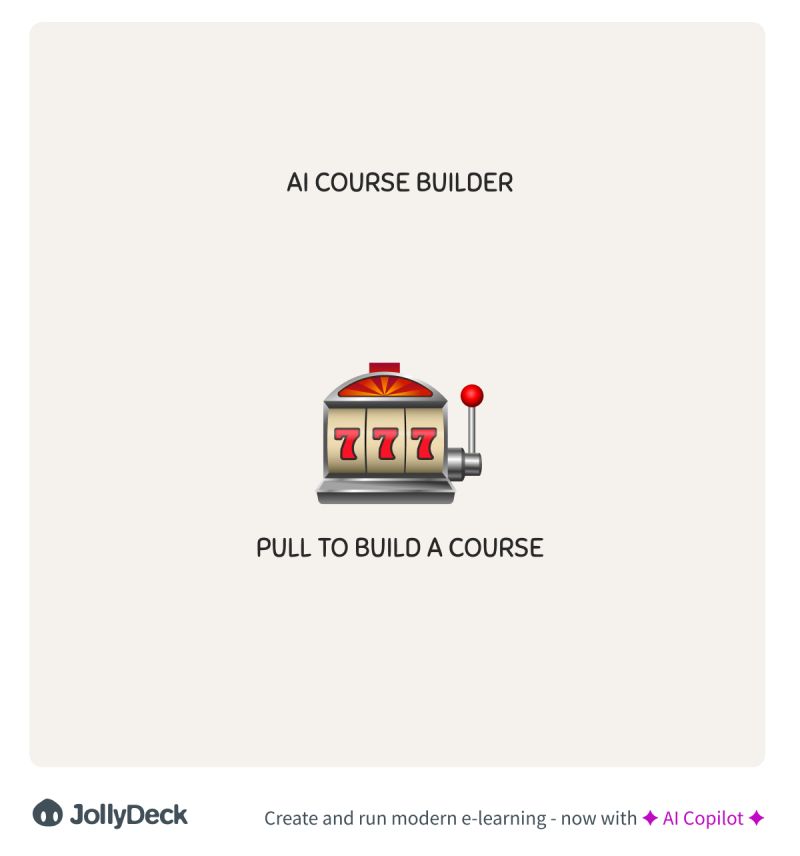
Matija Hiti, 20/05/2024
Effective AI use in content creation
Don't treat AI like a slot machine—feeding it prompts and hoping for the best. Instead, use strategies that provide context and clarity. Whether it's step-by-step prompting or using specialised tools like JollyDeck Copilot, the goal is to focus on creating valuable content, not writing instructions.
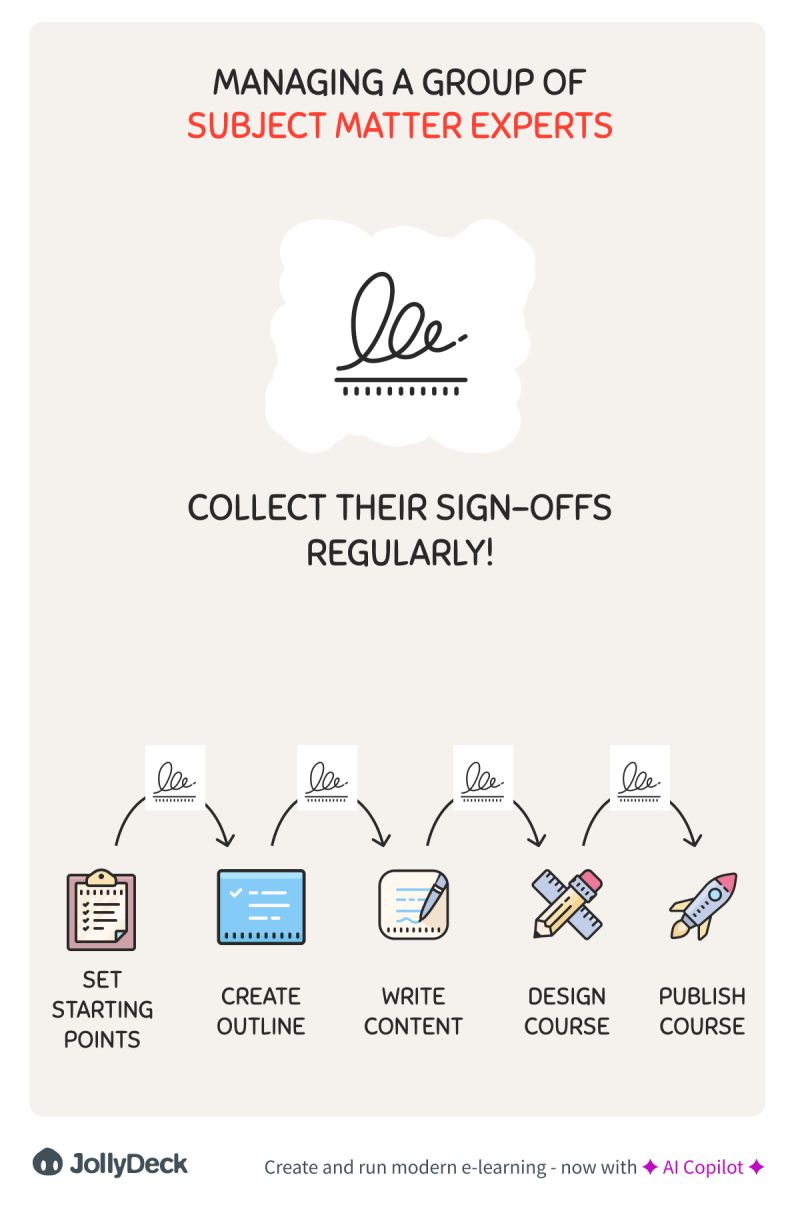
Matija Hiti, 17/05/2024
Managing SMEs in projects
Want to experience a real challenge? Try working with multiple subject matter experts (SMEs), especially from legal, on the same project. After weeks of back-and-forth, conflicting opinions, and endless revisions, we developed a sign-off protocol to keep things on track and get projects done.
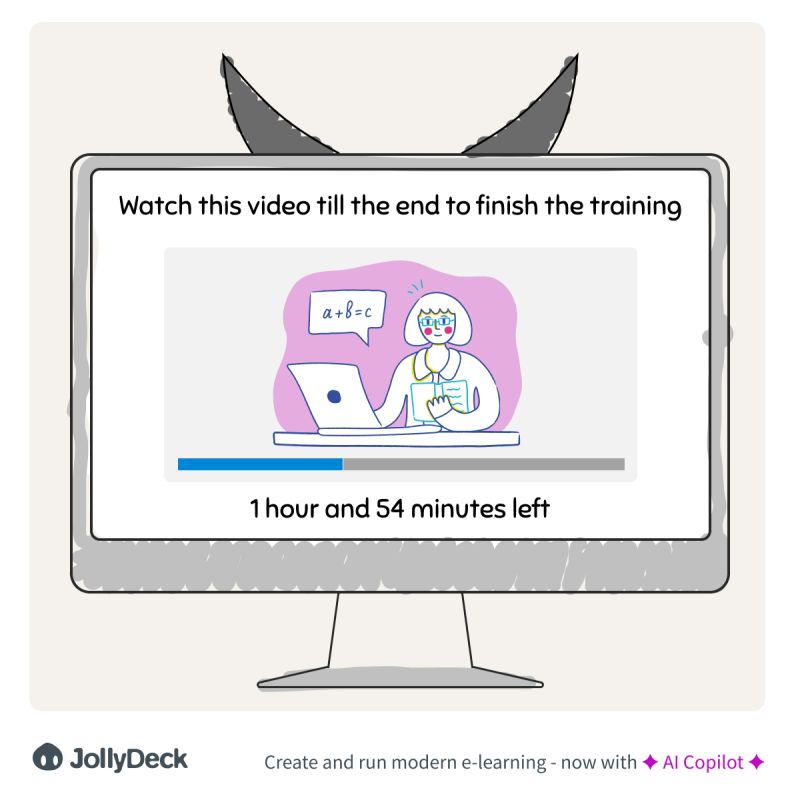
Matija Hiti, 13/05/2024
The e-learning mishap
True story: I accidentally enraged my wife over an e-learning course. When I closed her laptop mid-course, it reset her progress on a tedious video that had to be played from start to finish. A reminder to all instructional designers—don't create user-hostile experiences like this!
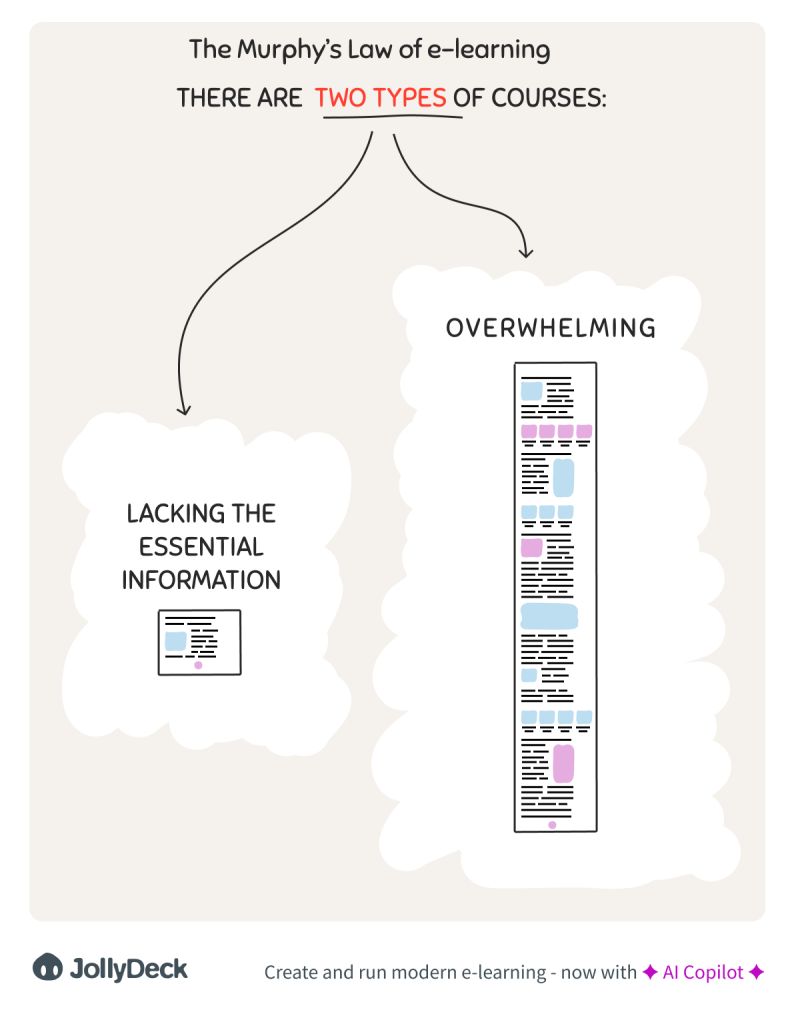
Matija Hiti, 10/05/2024
Balancing course content
Murphy's law of e-learning says courses either lack essential information or are overwhelmed with it. Creating balanced content can be challenging, especially when considering the learner's perspective. How do you tackle this issue?
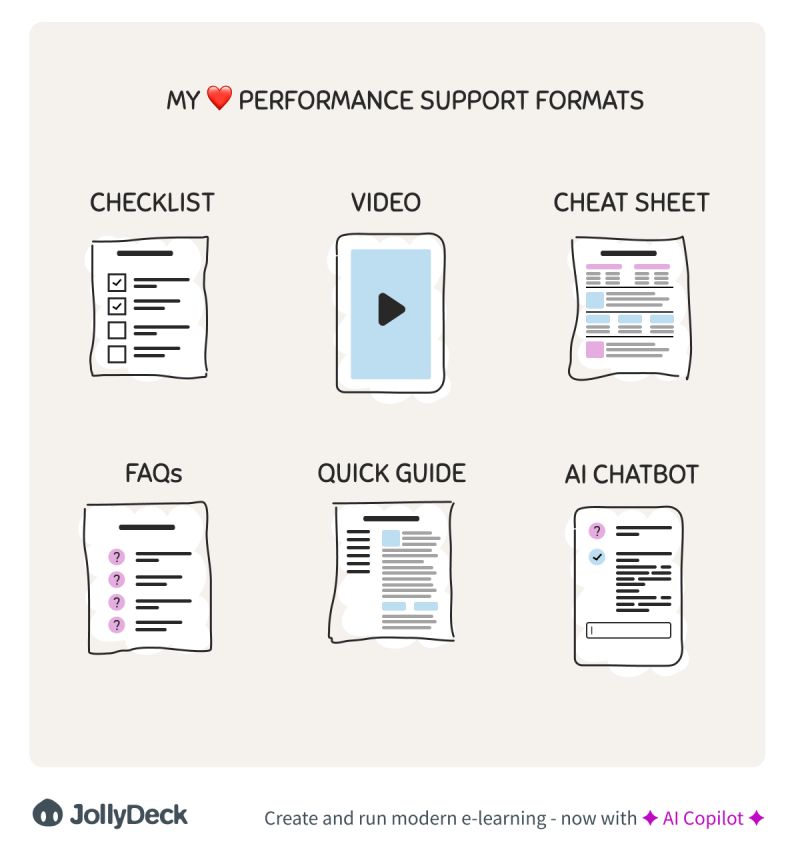
Matija Hiti, 08/05/2024
Choosing the right support format
There’s no single best format for performance support—just the right format for the right situation. From checklists to AI chatbots, each has its strengths. Here are six formats that stand out and when they work best, all easily accessible and editable in JollyDeck Create.
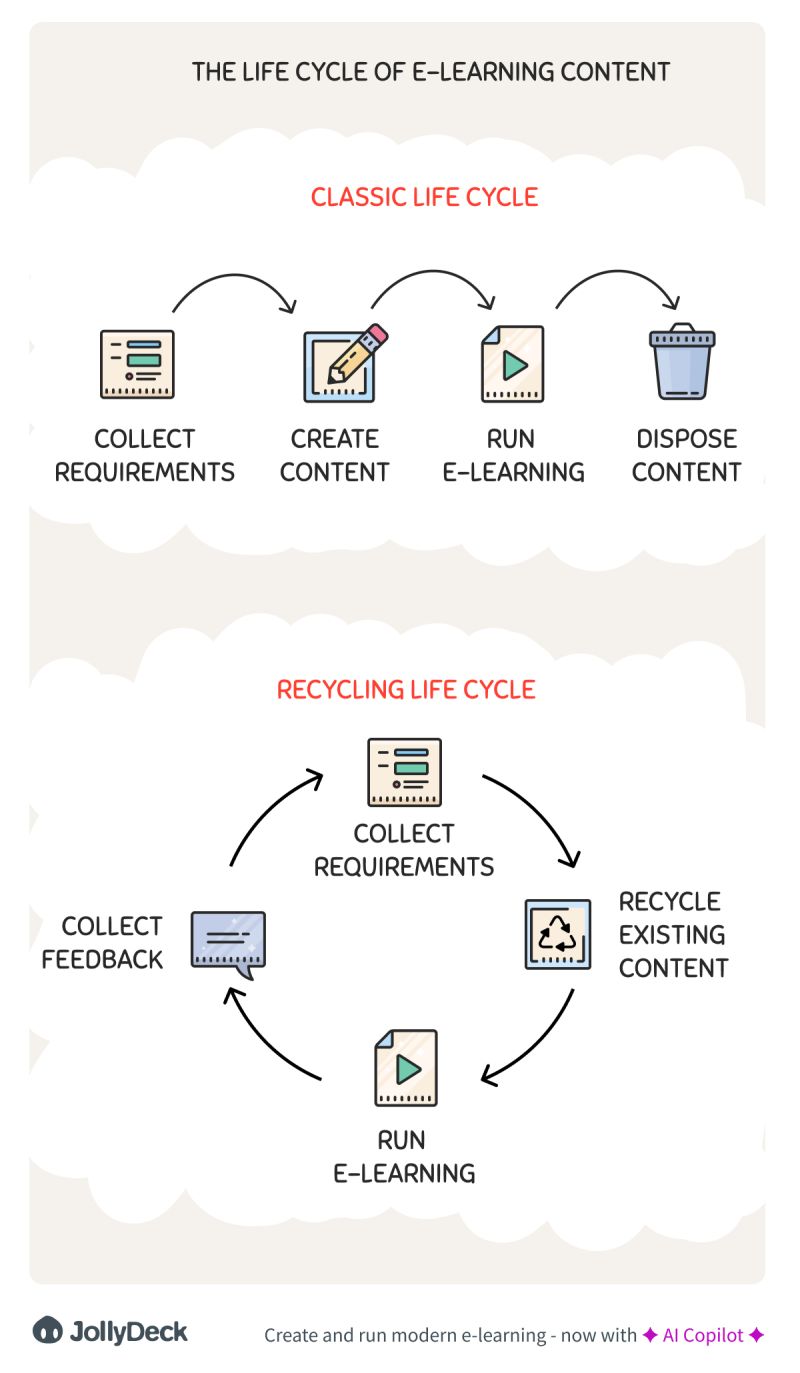
Matija Hiti, 07/05/2024
Recycle learning content
Why is creating learning content so costly? It's often because we start from scratch, overlooking existing materials that could be repurposed. While recycling content isn't always simple, AI and user-friendly tools like JollyDeck Create are making it easier to transform and adapt content for e-learning.
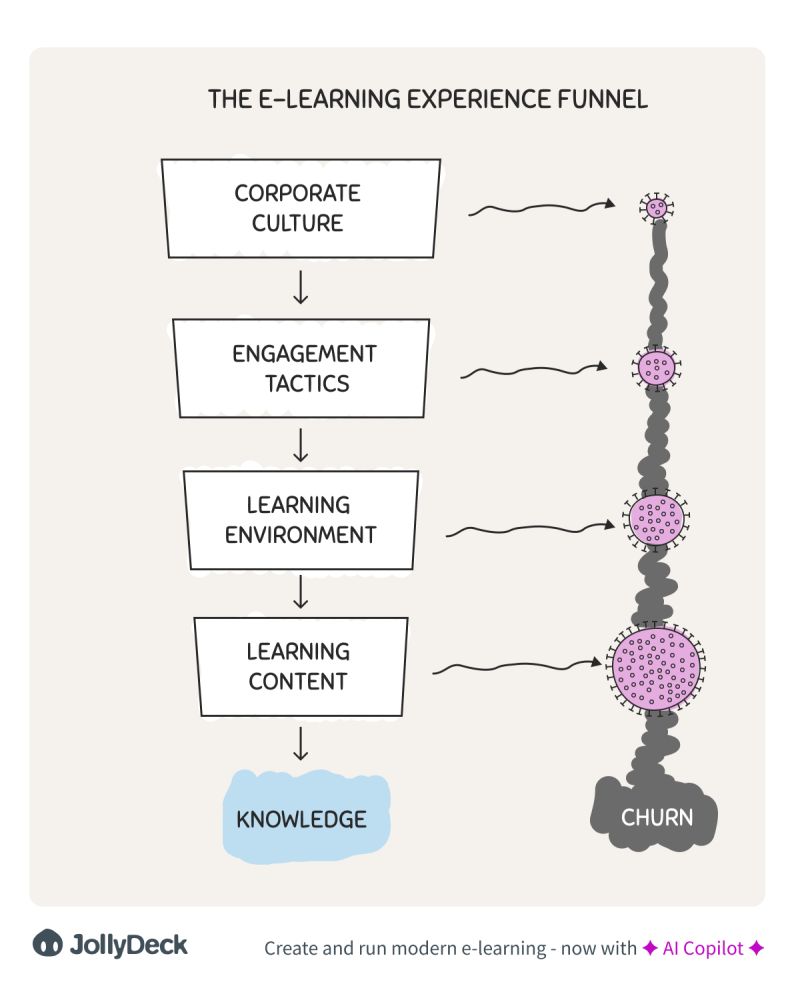
Matija Hiti, 30/04/2024
Mastering the learning experience
Learning experience is a complex beast, with some aspects always out of your control. To achieve the best outcomes, it's crucial to understand the churn points in the learning experience funnel. Key factors like corporate culture, engagement tactics, environment, and content all play vital roles.
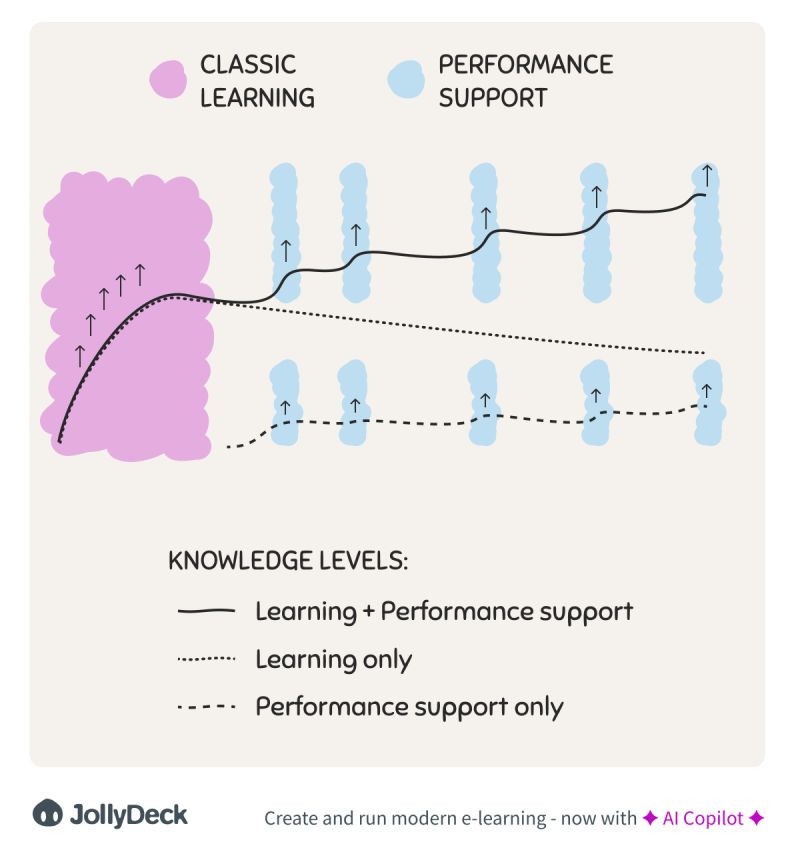
Matija Hiti, 29/04/2024
Balanced learning is key
Learning or performance support? Why choose just one? My journey with AI started from scratch, and I realised that foundational courses combined with performance support helped me grow far more effectively. A balanced approach to learning is the key to unlocking full potential.
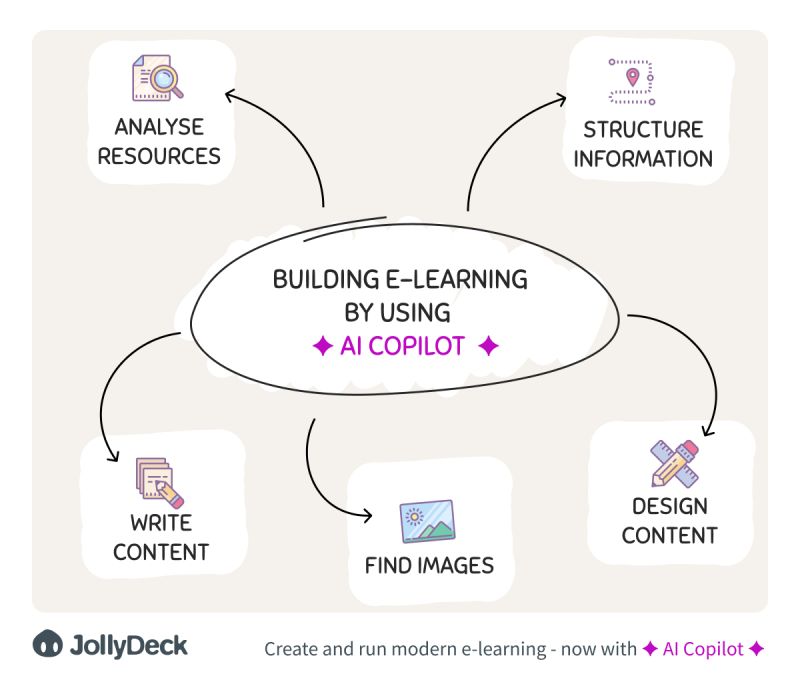
Matija Hiti, 25/04/2024
Unlock efficiency with AI Copilot
Discover how AI Copilot goes beyond ChatGPT to boost efficiency in content creation, design, and course structure for e-learning. Learn how it can transform your workflow with advanced capabilities.
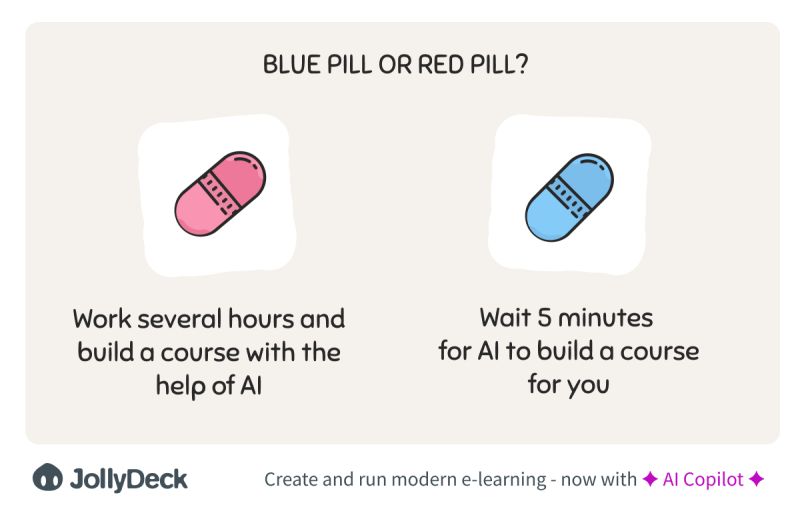
Matija Hiti, 24/04/2024
AI content dilemma
Like in The Matrix, choosing between two pills, we face a dilemma with AI in e-learning content creation. AI can produce content instantly, but is it too generic? Or should we invest more time to create tailored, impactful content with AI collaboration? The choice isn't as easy as it seems.
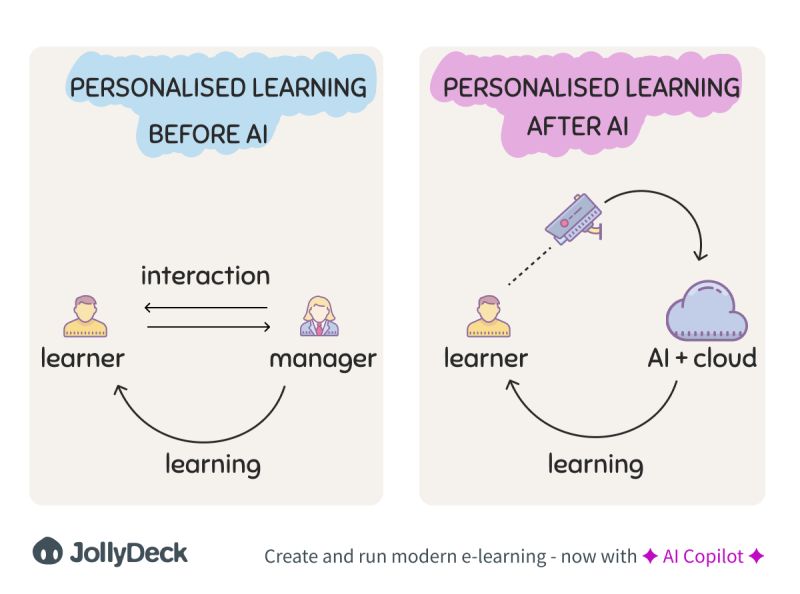
Matija Hiti, 18/04/2024
The price of personalised learning
AI could offer a personalised learning experience for every learner, but achieving this requires deep, detailed insights into each individual's skills, gaps, and ambitions. While AI might manage this at scale, it raises ethical questions about surveillance and privacy in the workplace. Are we ready for this trade-off?
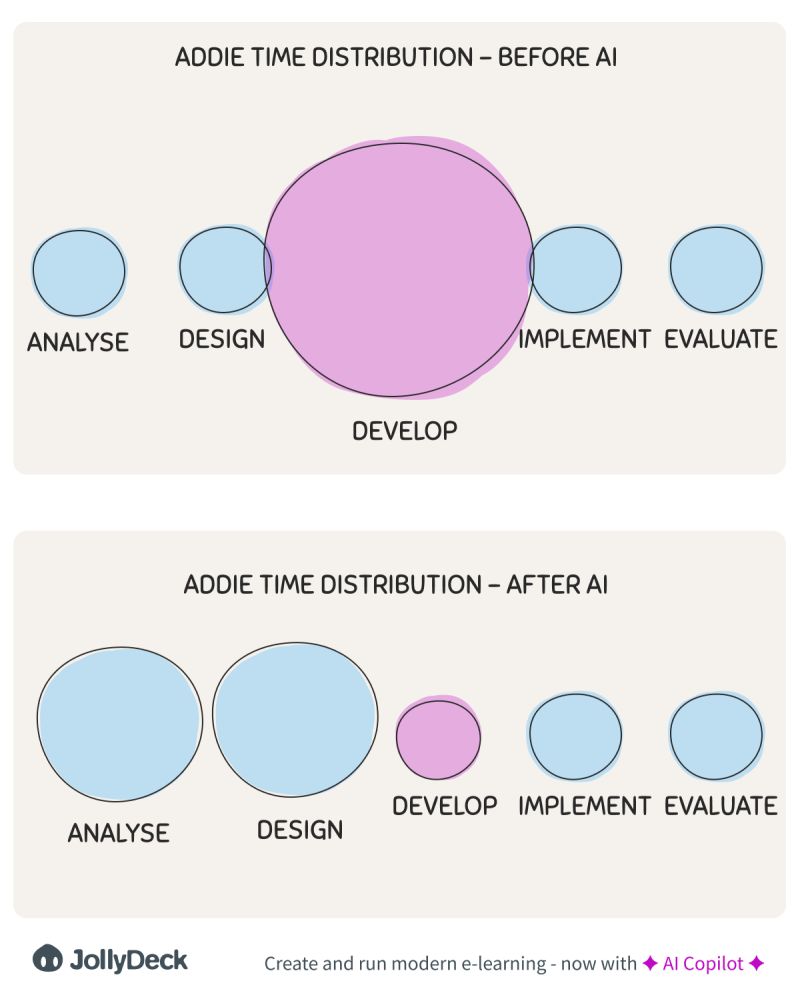
Matija Hiti, 17/04/2024
Optimising ADDIE with AI
I love the ADDIE process framework, but it often isn't well-balanced—development tends to consume most of the time, overshadowing analysis and design. With AI, we can cut development time and potentially reinvest savings to improve overall quality. Are we ready for this shift?
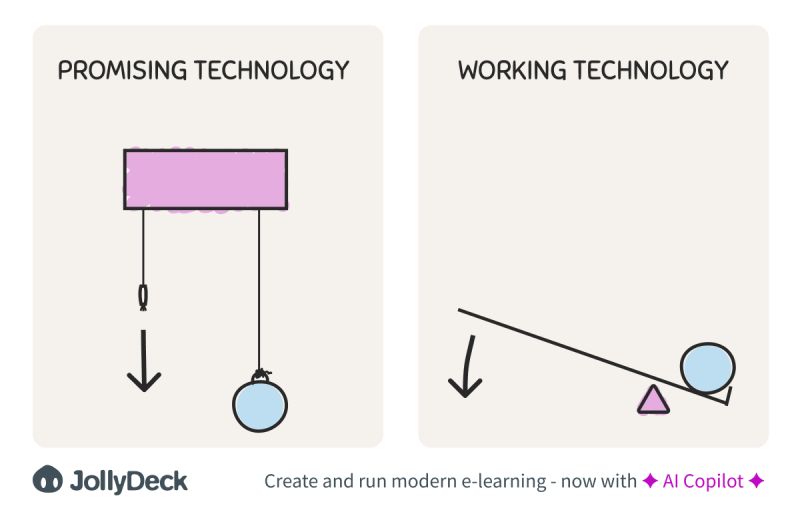
Matija Hiti, 15/04/2024
Smart vendor vetting
Vetting tech vendors can be challenging, but three simple questions can help you quickly identify which ones deserve your attention. Can you understand how it works? Can you try it? Would you enjoy using it? Apply these criteria and rely on common sense to find the right fit.
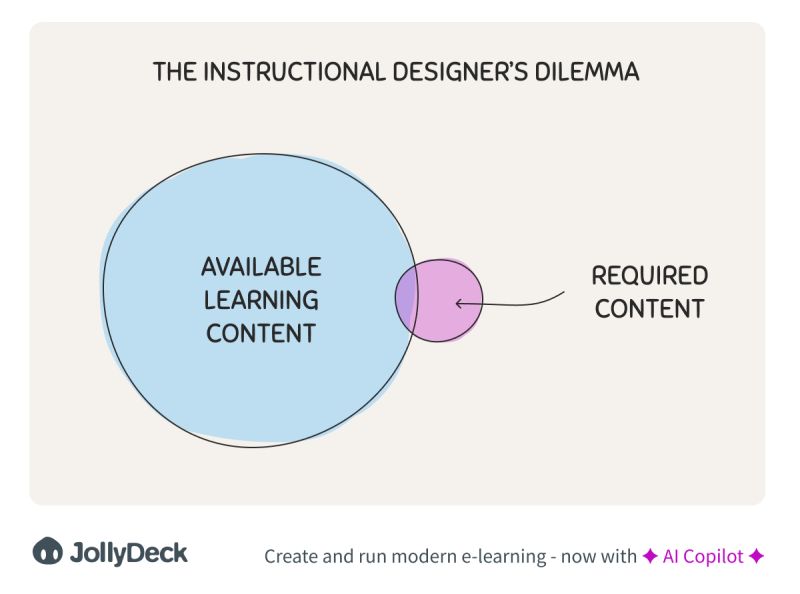
Matija Hiti, 10/04/2024
AI for content alignment
Aligning available learning content with specific objectives is rarely a perfect match, and creating new content can be expensive. Modifying existing content can cost even more. What if AI could help tailor content to your exact needs, from courses to quick reference guides?
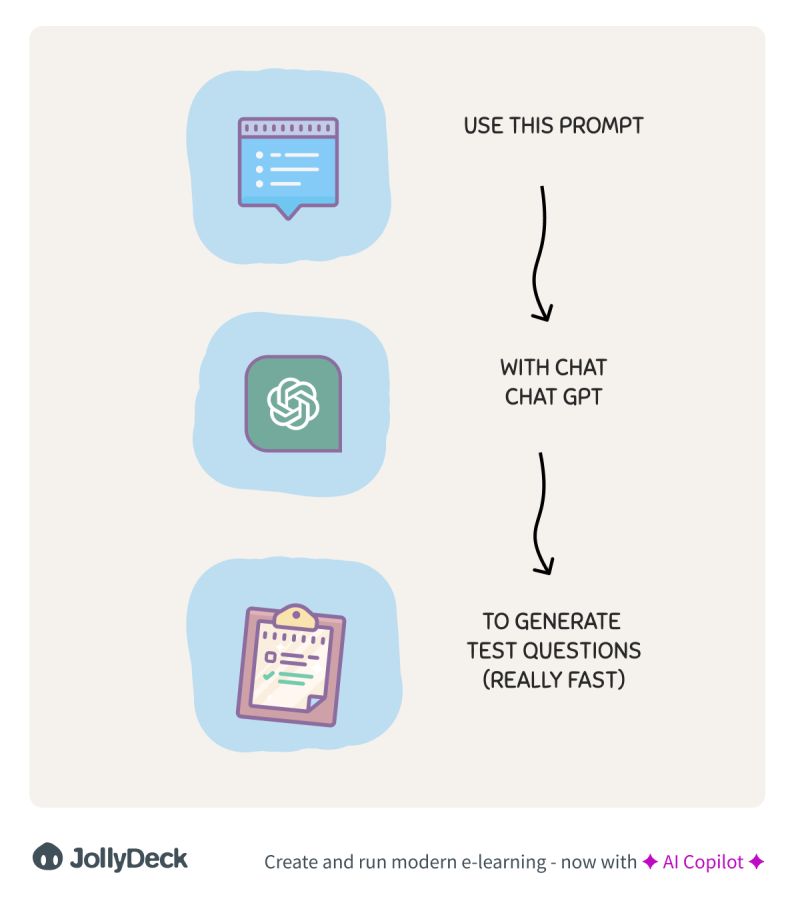
Matija Hiti, 09/04/2024
AI for simple questions
Do you really need AI for writing simple True/False questions? Maybe not, especially if you're starting from scratch. However, if you have a prompt ready to go, AI can save you a significant amount of time. Try the tested prompt shared here with your preferred language model and see the results.
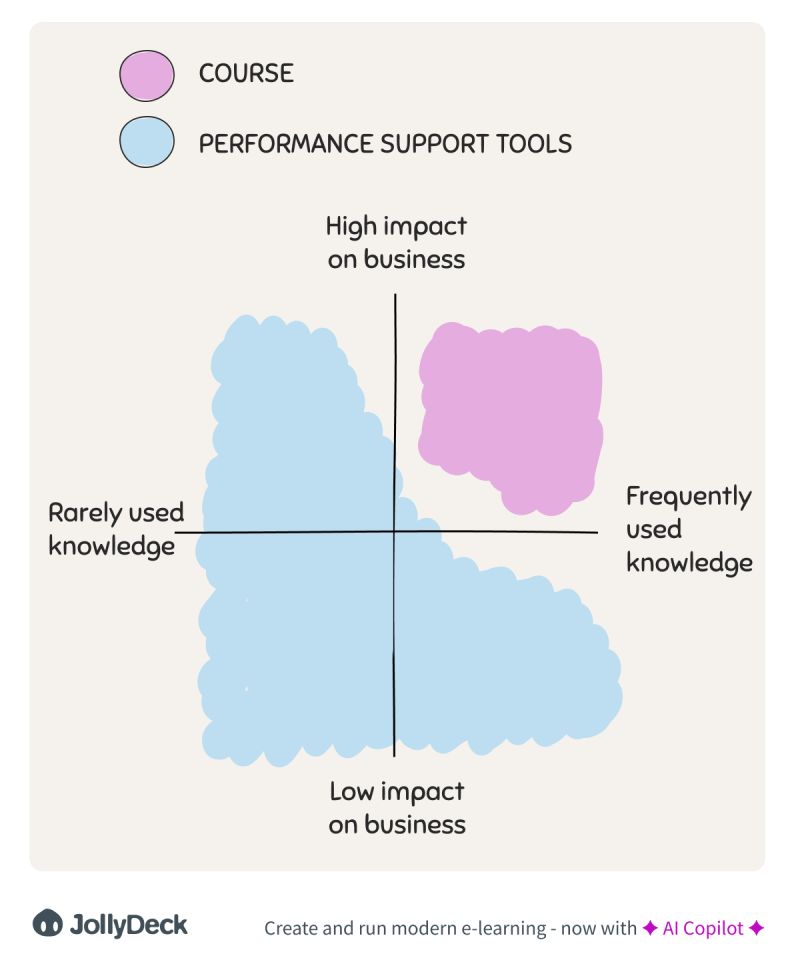
Matija Hiti, 08/04/2024
Beyond courses
Courses are valuable but aren't always the best fit for every learning need—they're time-consuming and costly to build. For low-impact or rarely used knowledge, performance support tools (PSTs) like cheat sheets and quick guides are more effective, providing just-in-time support to employees.
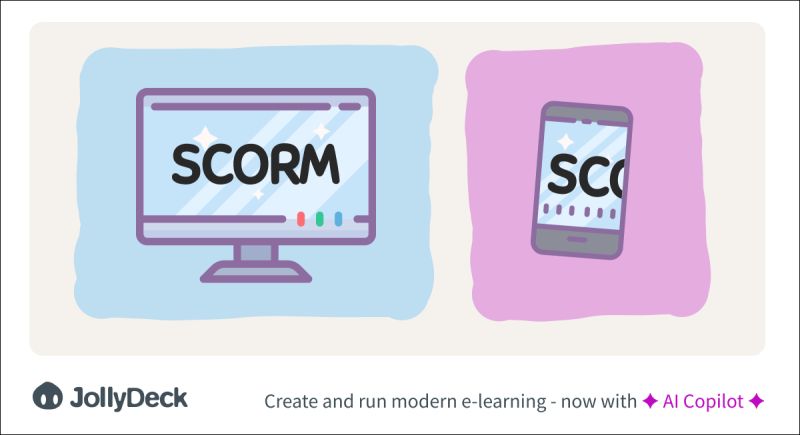
Matija Hiti, 04/04/2024
The SCORM dilemma
SCORM often gets a bad rap, but is it deserved? This tech standard, which underpins many modern websites, faces criticism mainly due to poor implementation and being used for the wrong purposes. When done right, SCORM can still be a solid choice for e-learning content.
